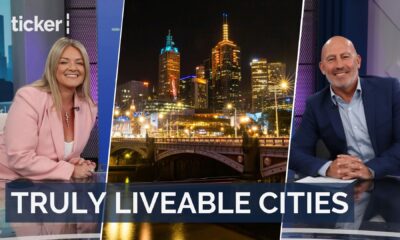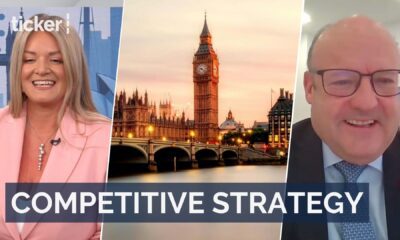Melbourne’s status as the sporting capital of Australia is well-established: the Victorian city hosts annual events such as the Australian Open tennis tournament, the Formula 1 Grand Prix, Melbourne Cup horseracing carnival, Boxing Day cricket Test and more.
Now the United States’ National Football League (NFL) is set to join the party.
In May last year, the NFL earmarked Australia as a future host for an international game.
Now it has been reported the NFL is set to lock-in three regular season games in Melbourne at the MCG, starting in October 2026, just after the Australian Football League (AFL) Grand Final.
The teams set to feature in the first game are 2022 Super Bowl winners the Los Angeles Rams and the Philadelphia Eagles. The Eagles will play in next week’s Super Bowl and feature an Australian, Jordan Mailata, on their team.
The Rams and the Eagles both have international marketing rights to Australia – giving the clubs an opportunity to build brand awareness and fandom beyond the US through fan engagement, events and commercial opportunities.
What’s in it for Victoria?
The NFL contests would pour millions of dollars into the Victorian economy; each team would travel with hundreds of staff, while thousands of fans would likely travel from interstate and overseas.
The Victorian government has not revealed any revenue estimates but last year’s Super Bowl week in Las Vegas generated more than $US1 billion ($A1.61 billion) in economic impact.
Given the NFL’s love of razzmatazz, it would likely host a week-long procession of activities and fan zones across the city before almost certainly filling the MCG with 100,000 spectators.
However, the choice of the MCG as a venue was not without controversy.
The MCG boasts the biggest capacity of any stadium in Australia, but it is an oval shape, not rectangular, which makes the viewing experience more difficult when it hosts sports such as soccer, rugby – or NFL.
Critics have suggested Accor Stadium in Sydney’s west or Suncorp Stadium in Brisbane (both rectangular venues) would be better for these games.
What’s in it for the NFL?
The NFL has broadened its international presence during the past decade or so, and now hosts eight games internationally each season.
But why did NFL decide on Australia to join the likes of England, Germany, Spain, Brazil and Mexico?
It chose places with strong sports consumer marketplaces, where streaming is popular and destinations where US fans are likely to travel to.
Australia, while not as popular as in the days of Paul Hogan, is still a popular destination for many Americans, especially those who like sports.
American football is far from a dominant sports code in Australia but is still a significant global market for the NFL, with an estimated fan base of more than six million supporters across the country.
But principally, it’s about the money.
The NFL’s media broadcast deal is one of, if not the, most lucrative in world sports: the TV and streaming media rights are said to be worth more than $US100 billion ($A161 billion).
Analysts estimate the NFL’s international games will collectively add $US1 billion ($A1.61 billion) to the league’s TV rights.
This has helped the NFL build a huge global audience, which Commissioner Roger Goodell has said is a key strategy:
The NFL is also looking to Australia for future athletic talent.
In recent years, NFL and college football teams have regularly recruited Australian athletes as punters (specialist kickers), who grew up kicking balls and can transfer their skills to the American game.
The NFL also recently set up a talent academy on the Gold Coast to encourage talented youngsters from Australia, New Zealand and the Pacific to pursue their NFL dream.
What fans can expect
Melbourne is not Las Vegas, but even so, if confirmed, the games will deliver some old-fashioned American showbiz to the state.
The MCG will likely be packed with fans (both hardcore and casual) for the contest, and of course the sport’s famous half-time shows.
And then there’s the athletic brilliance of the players: the game is considered by some to be as intellectual as chess but with enormous physical prowess required. The chance to see these massive athletes up close will no doubt be a huge drawcard.
NFL fans in Australia – and very likely New Zealand, the Pacific and even further abroad – will no doubt be waiting with bated breath for the league to confirm the games, and then try to find a way to secure sought-after tickets.























